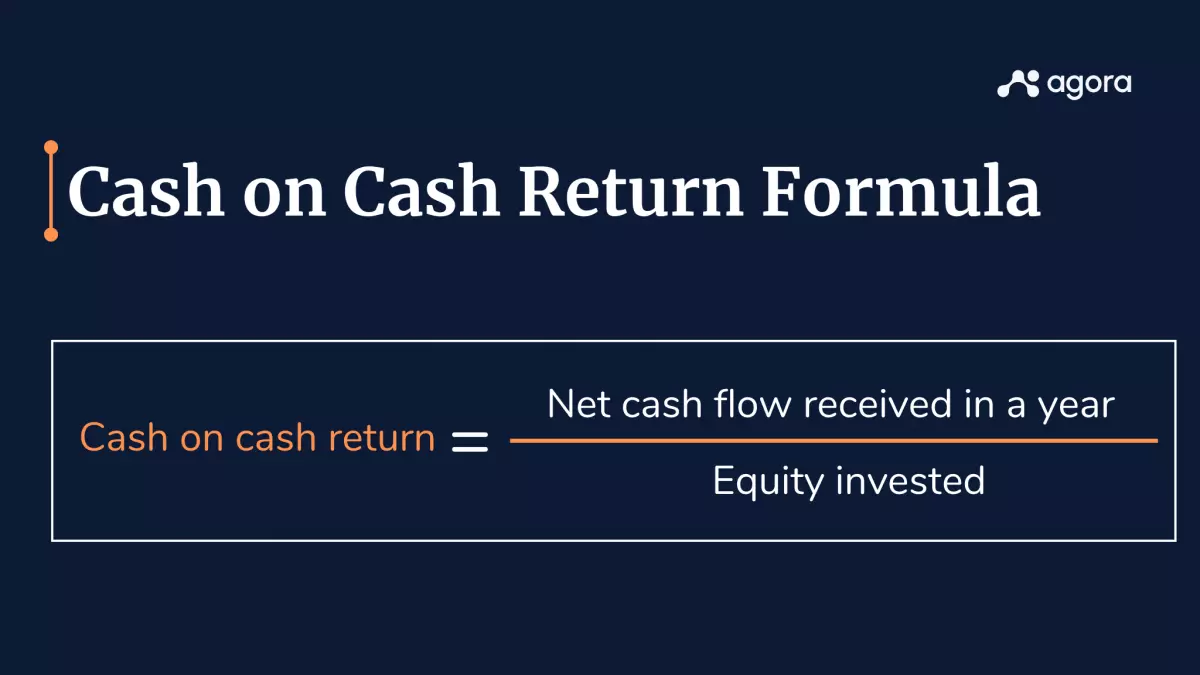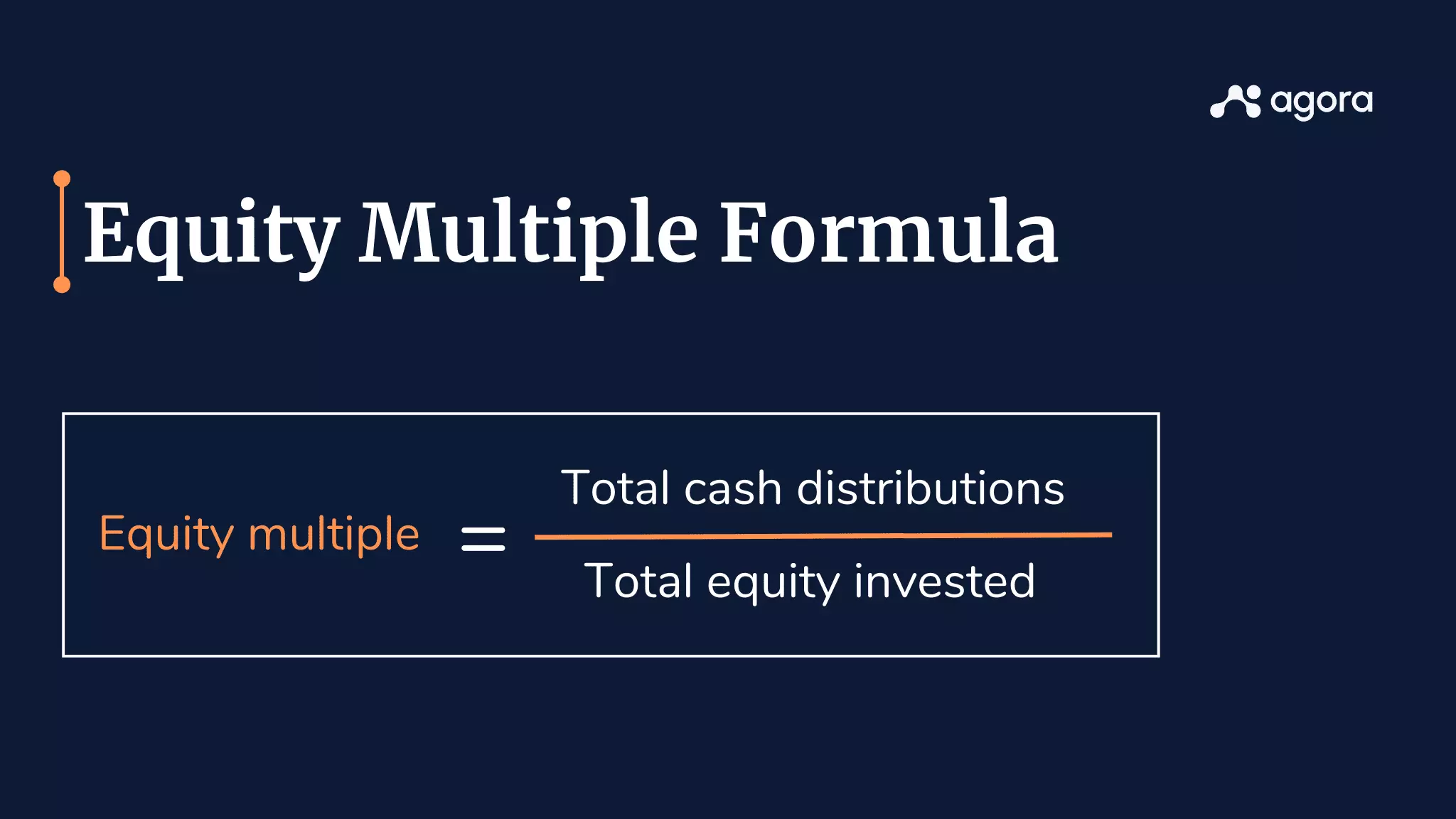 Caption: The cash on cash return formula in action.
Caption: The cash on cash return formula in action.
Investing in commercial real estate can be a lucrative endeavor, but understanding the financial metrics that evaluate such investments is crucial. One such metric is the equity multiple, which helps investors assess the profitability of commercial real estate deals. In this article, we will delve into the concept of equity multiples, explore their calculation methods, and weigh their pros and cons.
What is an Equity Multiple in Commercial Real Estate?
An equity multiple is a financial measure that allows investors to evaluate the potential returns of commercial real estate investments. It calculates the profitability of a project by comparing the initial investment with the total cash distributions received. In simple terms, the equity multiple represents the ratio of the cash earned from a transaction to the sum invested.
To calculate the equity multiple, you need just two figures: the equity invested in the commercial property and the total cash received from the investment.
Equity Multiple vs IRR: Which is Better?
While the equity multiple offers a straightforward measure of profitability, it does have its limitations. It fails to consider the time value of money. For instance, a real estate investment that provides a $2 million return over five years and one that provides the same return over ten years will have the same equity multiple. However, the former investment is more profitable as the investor has received the return in a shorter period.
To overcome this shortcoming, investors can turn to another profitability measure called the Internal Rate of Return (IRR). The IRR considers the time value of money by calculating the annual return on investment. Ideally, it is best to utilize both the equity multiple and the IRR to gain a comprehensive understanding of the deal's profitability and annual rate of return.
Equity Multiple vs Cash on Cash Return: Different Metrics, Different Purposes
The cash on cash return, another financial metric used in real estate, represents the percentage of total cash distributions received within a year relative to the equity invested. It focuses on the annual returns, while equity multiples consider the total sum invested and total cash distributions.
 Caption: The equity multiple formula in action.
Caption: The equity multiple formula in action.
How to Calculate Equity Multiple
Calculating an equity multiple for a commercial property investment is straightforward. Divide the total cash inflows over the project's life by the total equity investment. The resulting number is the equity multiple.
The equity multiple formula involves dividing the future cash flows from a real estate project by the equity invested. For existing investments, divide the cash inflows by the outflows. The equity multiple is the ratio of the amount earned for every dollar invested.
Examples of Equity Multiple Calculations
To better understand equity multiples, let's look at some examples:
Example 1:
- Initial investment in a commercial real estate property: $500,000
- Cash inflows received from Year 1 to Year 10: $150,000
- Cash received from the sale of the property at the end of Year 10: $700,000
- Total cash inflows from the investment = $850,000 ($150,000 + $700,000)
- Equity multiple = $850,000 / $500,000 = 1.7
- The investor has earned $1.7 for every dollar invested.
Example 2:
- Initial investment in a commercial real estate property: $1,000,000
- Cash distributions received from Year 1 to Year 10: $300,000
- Cash received from the sale of the property at the end of Year 10: $700,000
- Total cash distributions from the investment = $1,000,000 ($300,000 + $700,000)
- Equity multiple = $1,000,000 / $1,000,000 = 1
- The investor has earned $1 for every dollar invested, recovering the principal but making no profit.
What is a Good Equity Multiple?
An equity multiple greater than one indicates that not only has the principal been recovered but a profit has been made as well. Generally, a higher equity multiple is preferable to a lower one. However, it is important to note that a higher multiple does not necessarily signify a better investment. Factors such as risk and the time value of money must also be considered.
Pros and Cons of the Equity Multiple
The equity multiple offers a simple and easily understandable measure of return on investment. It provides clarity and helps compare investments with similar risk profiles and holding periods. However, it has its limitations. It does not account for the time value of money and does not reflect the inherent risk in a transaction. Other metrics, such as the IRR, provide a more comprehensive analysis.
 Caption: Pros and cons of using an equity multiple.
Caption: Pros and cons of using an equity multiple.
The Bottom Line
When venturing into commercial real estate investments, understanding the equity multiple is essential. It simplifies the evaluation process by providing a clear metric of absolute return potential. However, it is crucial to complement the equity multiple with other tools like the IRR and comprehensive risk assessments. A balanced approach, rather than solely chasing the highest multiple, is key to successful real estate investments.











